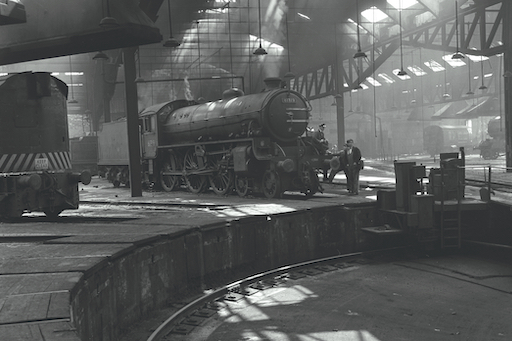
Great Hall
The Turntable

York North Engine Shed’s electrically powered turntable, c.1963. Science Museum Group. Image no. 1994-7556_ET_NE_F_1750.
Here we find ourselves on the far side of the Great Hall, with our backs to live railway lines, peering over perhaps the most significant feature of the museum’s building – our turntable. But why is a revolving platform so important?
From 1878 to the early 1970s, this was York’s largest engine shed, where locomotives were stored. If we consider this place when it was full, we’d be surrounded by over a hundred engines, with many of them spilling out into the yard behind us. This is why the turntable was so useful. Installed in 1954, this electrically powered platform allowed locos to be moved easily, no matter how many there were on site.
And it isn’t hard for us to imagine this process taking place. Engines were positioned so they circled the turntable, just as they are now. The operator would then rotate the platform so it lined up with the tracks of the engine they wanted to move. The loco would be shunted on, where it would revolve round to face the doors behind us, and away it would go. The process is so easy in fact, we still move engines around the site in exactly the same way today!
Although this may be the only surviving turntable on site, it was by no means the first. In 1878 there were actually three turntables here, taking up most of the space on the other side of the hall. A fourth was added in 1915. Each of these was operated by hand, and when a hundred-ton engine was placed on top, it was the task of engine staff to roll up their sleeves and push it round themselves. To accommodate larger locomotives being developed at the time, a 70ft turntable was installed in 1935. Finally, this was replaced by the electrically powered platform we have in front of us today following damage from an air raid sustained during the Second World War.
Seven decades since its installation, the Great Hall turntable is an icon of the Railway Museum site. Emblematic of our history, it not only draws crowds of visitors eager to catch a glimpse of life in the engine shed, but it also draws the locomotives in too.